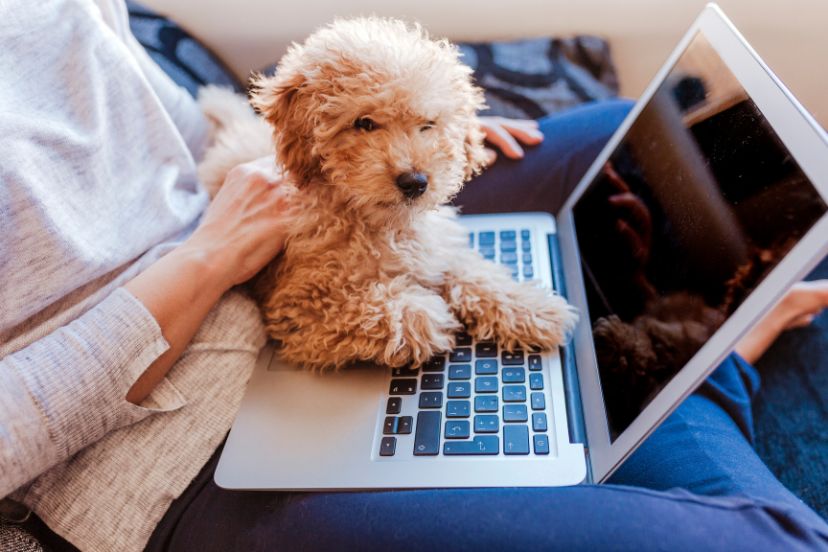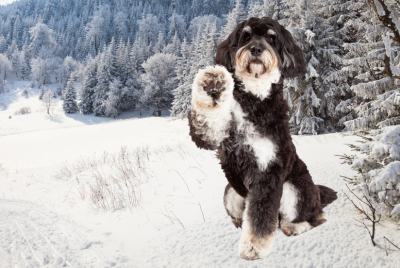Poodle Separation Anxiety: A Comprehensive Guide
Introduction: Understanding Poodle Separation Anxiety
Brace yourself, pet parents, for we are about to embark on a journey to understand one of the most common challenges faced by poodle owners – separation anxiety. Our furry friends, especially poodles, are known for their intelligence and affectionate nature, but sometimes, they can also be prone to a bout of anxiety when left alone.
In this comprehensive guide, we will dive deep into the world of poodle separation anxiety. From identifying the symptoms to implementing effective coping strategies, we’ve got you covered. So, let’s roll up our sleeves and unravel the mysteries behind our beloved poodles’ emotions!
Poodle Separation Anxiety: What is it?
Picture this: you’re getting ready to leave the house, and as you pick up your car keys, your poodle starts whining, pacing, and showing visible signs of distress. This behavior might be a clear indication of separation anxiety. Simply put, separation anxiety in poodles refers to the stress and unease they experience when separated from their human caregivers. It’s essential to recognize this issue early on and take appropriate steps to make your furry friend feel more secure and at ease.
Signs of Poodle Separation Anxiety
Our adorable poodles may not be able to speak, but they communicate their feelings through various behaviors. Here are some signs that your poodle might be experiencing separation anxiety:
- Excessive Barking and Howling: If your neighbors complain about your poodle’s non-stop barking and howling when you’re away, it could be a sign of anxiety.
- Destructive Chewing: Returning home to find your favorite shoes in tatters? Poodles with separation anxiety may resort to destructive chewing as a coping mechanism.
- House Soiling: Unexpected accidents in the house, even if your poodle is usually well-trained, might indicate anxiety-related stress.
- Pacing and Restlessness: Does your poodle seem restless, pacing back and forth anxiously when you’re about to leave?
- Escape Attempts: Anxious poodles may try to escape from the house or crate in a desperate attempt to reunite with their owners.
- Loss of Appetite: A sudden change in eating habits, such as a loss of appetite, can also be a manifestation of separation anxiety.
If you notice these behaviors in your poodle, it’s time to take action and address their anxiety head-on.
Causes of Poodle Separation Anxiety
Now that we’ve identified the signs, it’s crucial to understand the root causes of poodle separation anxiety. Various factors can contribute to their distress when left alone:
- Bonding and Attachment: Poodles are known for forming strong bonds with their human family members. When separated, they can feel a sense of loss and insecurity.
- Life Changes: Major life changes like moving to a new house, a change in family dynamics, or the loss of a loved one can trigger separation anxiety.
- Traumatic Experience: Poodles who have experienced past traumas, such as abandonment or mistreatment, may be more prone to separation anxiety.
- Lack of Socialization: Puppies that haven’t been adequately socialized and exposed to different environments may develop anxiety when left alone.
- Overdependence: Constantly being around your poodle without giving them space can lead to overdependence, making them anxious when you’re not there.
Now that we know the causes, it’s time to explore effective strategies to help our furry friends cope with separation anxiety.
Helping Your Poodle Cope: Practical Strategies
The good news is that there are several tried and tested methods to ease your poodle’s anxiety and strengthen their emotional well-being. Let’s dive into some practical strategies:
1. Gradual Departures and Arrivals
Instead of making a grand exit or entrance, try to keep your arrivals and departures low-key. This approach minimizes the contrast between your presence and absence, helping your poodle feel more secure.
2. Create a Safe Space
Designate a cozy and comfortable spot in your home as your poodle’s safe space. Fill it with their favorite toys, blankets, and maybe an old shirt that carries your scent.
3. Desensitization Training
Gradually increase the time you spend away from your poodle, starting with short intervals and gradually extending them. This desensitizes them to your absence and helps build confidence.
4. Engage in Interactive Play
Before leaving, engage your poodle in a fun and stimulating play session. This can tire them out and make them feel more relaxed when you’re away.
5. Consider a Companion
If your lifestyle permits, introducing another pet as a companion for your poodle can work wonders in reducing separation anxiety.
6. Use Calming Aids
Explore calming aids like pheromone sprays, music, or toys designed to soothe anxious pets. These products can have a positive impact on your poodle’s emotional state.
FAQs about Poodle Separation Anxiety
1. Is poodle separation anxiety common?
Yes, separation anxiety is relatively common in poodles due to their strong bonds with their owners.
2. Can poodles outgrow separation anxiety?
In some cases, with proper training and support, poodles can overcome separation anxiety over time.
3. Are certain poodle varieties more prone to separation anxiety?
While all poodles can experience separation anxiety, individual temperament and early socialization can play a role in its development.
4. Can professional training help with separation anxiety?
Yes, seeking the help of a professional dog trainer or behaviorist can be beneficial in managing separation anxiety.
5. Should I punish my poodle for anxious behavior?
No, punishment is not recommended. Instead, focus on positive reinforcement and patience.
6. Can separation anxiety lead to health problems in poodles?
Untreated separation anxiety can lead to stress-related health issues in poodles, so addressing it promptly is essential.
Conclusion: Your Poodle’s Emotional Well-being Matters!
As responsible pet parents, it’s our duty to ensure our poodles lead happy and stress-free lives. By understanding the signs and causes of separation anxiety and implementing effective strategies, we can help our furry companions feel secure even when we’re not around. Remember, patience, love, and consistent training are key to overcoming poodle separation anxiety.
So, let’s strive to be the best paw-rents possible and give our poodles the emotional support they need to thrive in our absence. With time and dedication, you’ll witness your poodle transform into a more confident and contented companion!




